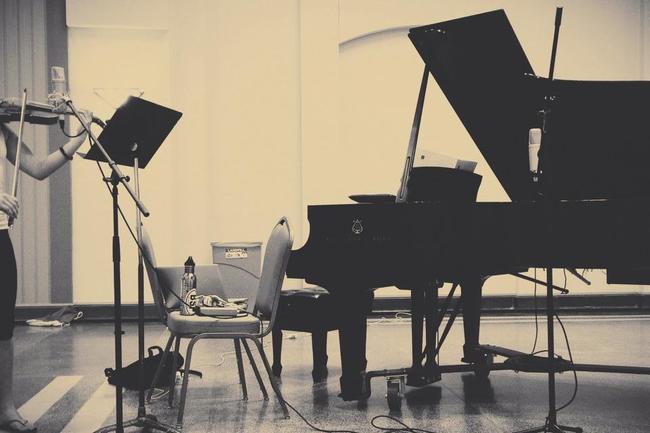MUSIC: Arvo Pärt, Spiegel Im Spiegel (1978)
This past weekend Cassie Parks, a friend and fellow WashU musician, met up with me in a ballroom at midnight to collaborate on Arvo Pärt’s Spiegel Im Spiegel for violin and piano. A piece seeming so simple, it is easy to dismiss as background noise or Musak. But Spiegel Im Spiegel lacks definition, and that’s what gives it a mystical and elusive, yet commanding and quasi-spiritual character.
Take a listen:
Pärt’s music hangs by a thread. When immersed in the sound, like sitting at the piano, it can be easy to get lost in the expanse and bow to the “power of music to obliterate the rigidities of time and space” (Alex Ross’ words, not mine).
Sometimes it strangely feels as if there is no music at all - that life is simply happening - due to the lack of an expressive melody and a predictable, stepwise motion. But this makes sense. Historically Spiegel Im Spiegel can be thought of as holy minimalism, an Eastern-European offshoot of the well-known twentieth-century style characterized by open-endedness, repetition and a steady pulse.
Minimalism of this American variety tapped into a particular kind of universal energy - one that fuels the bustle of the city and drives consumer culture.
However, Pärt’s music invites a different universality: one that is opposite - still, spiritual and pure. In fact, it provides a refreshing oasis from our contemporary over-saturated sound culture.
This simplified language is a style known as “tintinnabuli”, after the Latin word for bell. While Pärt himself has described it as “the mathematically exact connection from one line to another … where the melody and accompaniment are one”, there is a less poetic definition. Tintinnabuli is simply counterpoint between two voices, where one moves in stepwise melodic motion while the other rotates through the three pitches of a major or minor triad.
We see this in Spiegel Im Spiegel. The violin part focuses on stepwise motion to an A. Movement to this pitch initiates from above and below and each time it’s repeated it adds an additional pitch to the sequence, until finally it spans over an octave. The piano mirrors the stepwise motion, but articulates the pitches of each triad, providing the steady, ticking pulse. Each time the ‘tonic’ is reached, the piano solidifies the arrival with octaves in the far reaches of the instrument’s range.
As it unfolds, it is clearly repetitive, as you would expect any minimalist piece to be. And as the contour of each repetition grows greater, a simple idea is stretched to far-reaching heights.
But what’s unique is that the music doesn’t demand attention or scrutiny. Like Schoenberg’s twelve-tone row, tintinnabuli does demand adherence to a set of rules, but unlike its Viennese relative it does not dominate the resultant aesthetic. Nor does the music seek to tell a story or arouse passions like the Romantics.
Perhaps the reason that Pärt’s music is so often overlooked as ‘background’ music is because it blends into our life so well. The boundaries between music and life, listening and experiencing, or sound and thought all delicately crumble.
Therein lies the beauty. It’s just a major scale played on violin and some triads on the piano. But the simplicity of the actual notes silences the mind, immersing the self in an eternal present that is anything but definable. It’s a state of mind.
